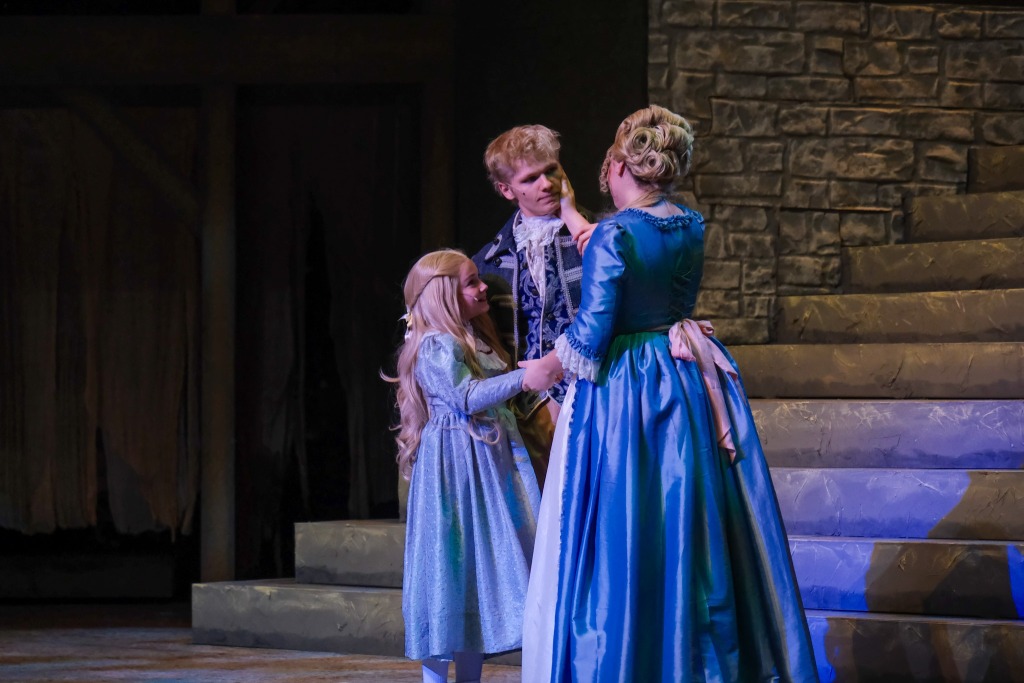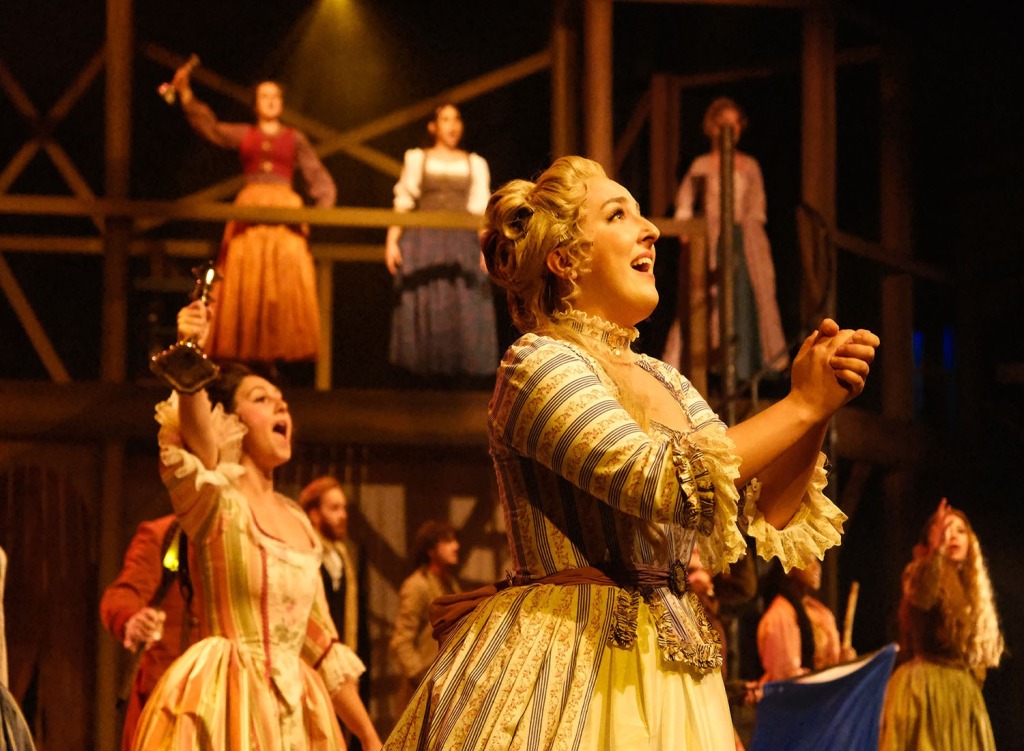Based on the novel by Charles Dickens, the on-stage libretto version of “A Tale of Two Cities” is jumping out of the page and into the Tower Theater stage Nov. 7 to Nov. 22.
This sung-through musical takes the audience into the tumultuous era of the French Revolution, telling the nuanced stories of the uprising and the souls of those caught in the middle of the turmoil.
The golden thread of the plot revolves around Lucie Manette, a young English woman whose unconditional love and magnetic optimism impacts the fates of each of the characters — even catching the eye of two contrasting love interests: French aristocrat Charles Darnay, played by senior Brandon Bayes and English attorney Sydney Carton, played by senior Jesse Wilkerson.
“(Lucie) is the kindest, most selfless person you will ever meet,” senior Lily Smith, who plays Manette said. “She’s very pure and very Christ-like … her gentleness and her kindness and her compassion is her strength, and it is what strengthens everyone in the whole show.”
Not only has her character’s duality of warmth and strength challenged Smith’s faith, but the technicality of the role has also refined her performance. Smith has paid extra attention to stay true to her character’s lively personality while adhering to the time period.
“The trick with this was being able to play high society — big wig, tight, large dress, kind of costume — in a way that still resembles a lively young woman,” Smith said.
As opposed to seeing their elaborate costumes as a restrictive hindrance, the actors were encouraged to use them to enhance the performance’s authenticity to a modern American audience.
Bayes echoed the sentiment that the costumes are integral to how the actor talks and moves onstage. Because of this, the cast was given weeks to familiarize themselves with their roles following the initial period of learning the foundational elements of the musical early on in the process.
From discussing how the characters relate to each other to symbolism through the production’s color palette, Chair of the Department of Theatre Arts Linda Cooper, who is directing the show, laid out the basis of the show on day one of rehearsal. Cooper made sure that the cast understood the vision, despite many members being unfamiliar with the novel.



“(The diagrams) really allow you to understand the characters and how they all come together and create this spider web of a story that is a beautiful picture,” Bayes said.
For Bayes, the beauty of the story comes from the way the narrative flips the revolution plot on its head, making the war a backdrop to the core of the show: the hearts of the characters.
“The main characters of the story aren’t on one or another side,” Bayes said. “They’re people that are caught in the middle of this broad spectrum of war, of overthrowing. And you see how they’re affected by the people who are taking action and the people who are the oppressors.”
For both sides of the conflict to shine through in the production, the costumes and lighting represent both the British and French sides of the war.
“We costume them in different colors,” Cooper said. “So, the French are all in reds and yellows, the color of fire, because that’s where the Reign of Terror is. And then the British are all costumed in blues because they are the color of calm, of peace. So, when you see those two colors on stage together, that’s when you feel the tension.”
This symbolism technique is a visual component that enhances each story arc of the character, bringing character motivation to life on stage.
“I like people to feel valued as actors … these very talented gifts that God has given us,” Cooper said. “And when you feel valued, you understand your role in the story, and then you value that role and how it’s played in the story.”
This directing approach gives the cast agency and confidence to make informed choices for their characters, allowing for artistic freedom during the creative process.
“It’s felt like a very free, encouraging, inspiring process to be creative,” Smith said. “And I feel like it’s been a good environment to make choices and to be creative without feeling like you’re wrong.”
While “A Tale of Two Cities” blends together moments of emotional suspense and heartwarming joy, it also paints a picture of the unsung heroes motivated by love and the power of redemptive sacrifice. Tickets to the production can be purchased at www.liberty.edu/tickets or at the Tower Theater box office.
Hagen is the feature editor for the Liberty Champion.
